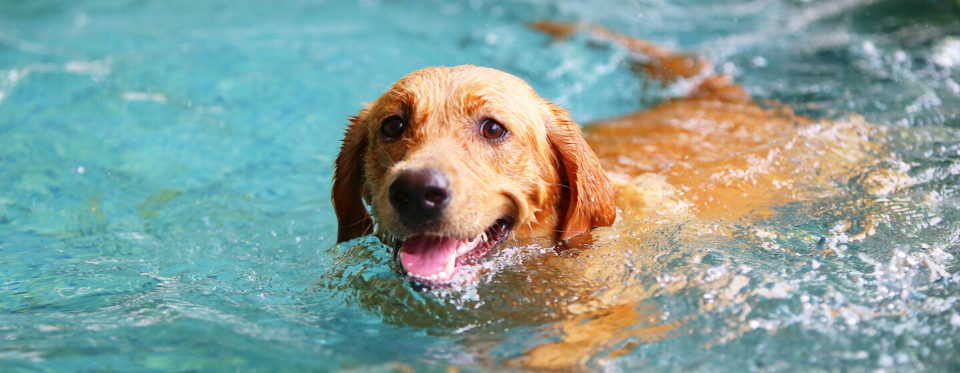Some dogs might fear water due to negative past experiences, lack of exposure during critical developmental periods, or inherent temperament traits. Water-related traumas, such as accidental drowning or harsh bathing experiences, can cause a great deal of anxiety.
Also, specific dog breeds have a natural aversion to water. Early socialization and positive associations can help alleviate this fear, but individual differences in dogs’ personalities play a role in their reactions to water.
If your pup has concerns regarding water activities, address the core issue to help it feel better about it. At the same time, consider being equipped with pet insurance NZ so you are more prepared to tackle health emergencies arising from the water escapades.
Contemplate purchasing dog insurance so your pupper is covered for basic medical care with minor financial implications. In the meantime, read this article to learn how to teach your scared puppy to swim.
How to teach?
Coaching a fearful pup to swim requires patience, positive reinforcement, and gradual exposure. Follow the below step-by-step guide that can help you with the process.
- Choose a calm, shallow body of water like a kiddie pool or a quiet lake with gentle slopes. Use a comfortable and secure-fitting harness to ensure your pup feels safe.
- Begin by introducing your pup to water gradually. Start with just letting it explore the water’s edge on its terms. Allow it to sniff and observe without pressure.
- Use plenty of treats, toys, and praise to create positive associations with the water. Toss treats near the water’s edge and encourage your pup to get closer.
- If your pup is comfortable, slowly guide them into the shallow water while offering treats and reassurance. Keep the wading experience short and enjoyable.
- Gradually guide your pup into deeper water and support its body gently as it starts to paddle with its front paws. Keep your hands under your pup’s belly to provide a sense of security.
- Use floating toys to encourage playfulness and make the water seem like a fun place. Toss the toy a short distance so your pup ventures slightly deeper to retrieve it.
- Stay close to your pup and remain calm. Your presence will reassure it that everything is okay. Avoid rushing the process. Over multiple sessions, gradually increase the depth of the water. Continuously monitor your pup’s comfort level and adjust accordingly.
- If your pup is too anxious, don’t force it into the water. Respect its pace and feelings. Forcing can worsen its fear.
- Celebrate small victories. Praise and treat your pup for any progress, even if it’s just getting closer to the water.
- As your pup becomes more comfortable, gently support its body while allowing it to paddle. Consider using a life vest for added security.
- Regular practice is crucial. The more positive experiences your pup has in the water, the more its confidence will grow.
Overcoming water phobia can take time. If your pup’s fear is severe or persistent, consider seeking guidance from a professional dog trainer or behaviorist.
While swimming can benefit dogs, there are many risks, too. Concerns include waterborne illnesses, unsupervised drowning, ear infections from trapped water, and exhaustion. Strong currents or cold water can also pose dangers.
Dogs with short snouts might struggle to breathe while swimming. Prioritize safety by supervising, using life vests if needed, and being aware of the water conditions and your dog’s abilities.
Simultaneously, consider being prepared with pet insurance in NZ so that handling unanticipated health situations can be much easier. Dog insurance assures a canine basic health benefits at all times, which is why you must contemplate purchasing a policy.

